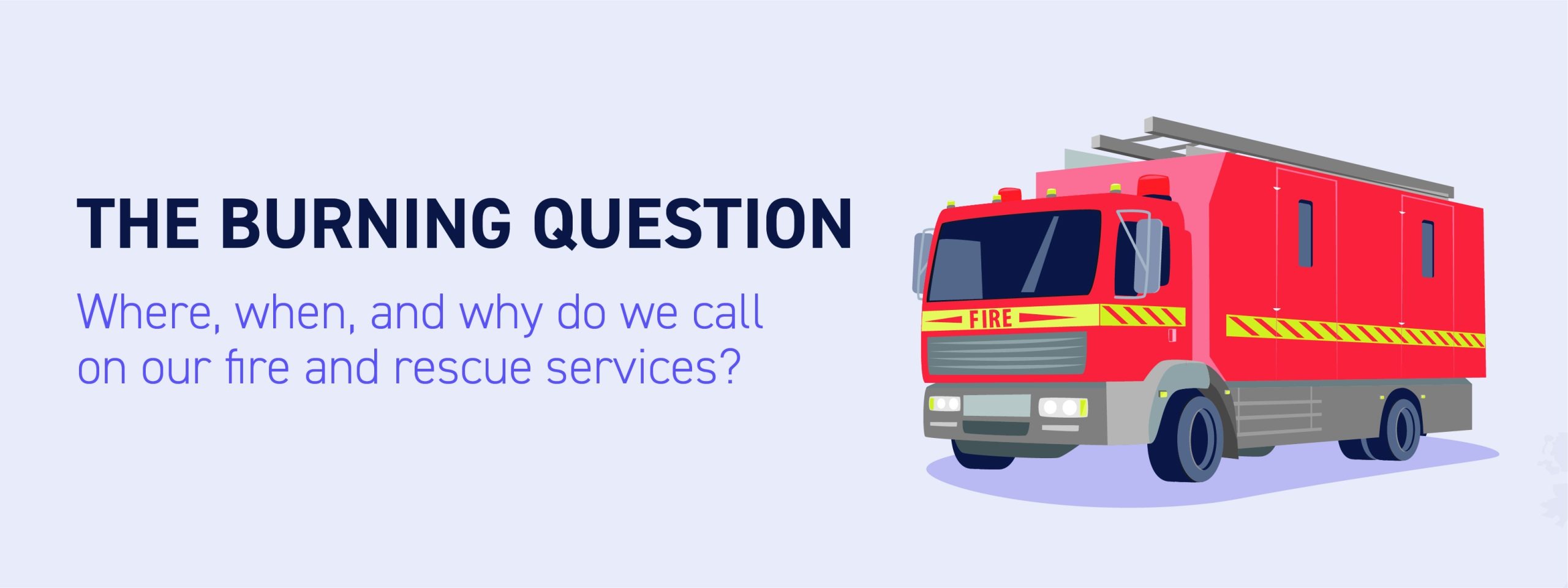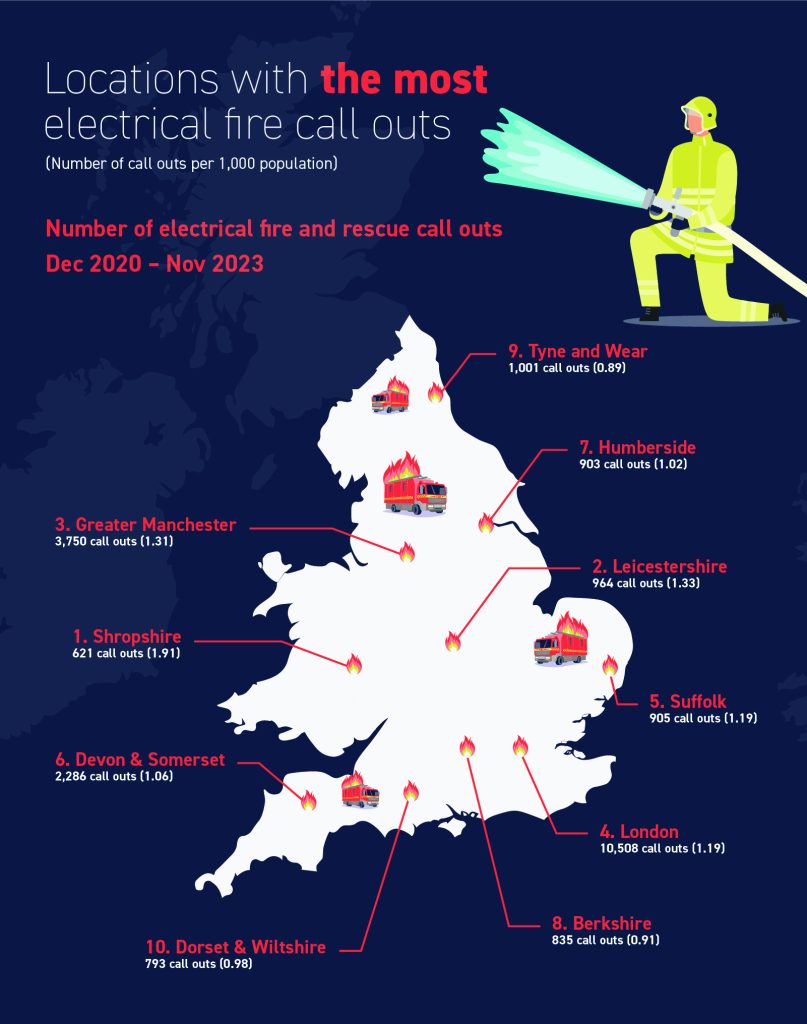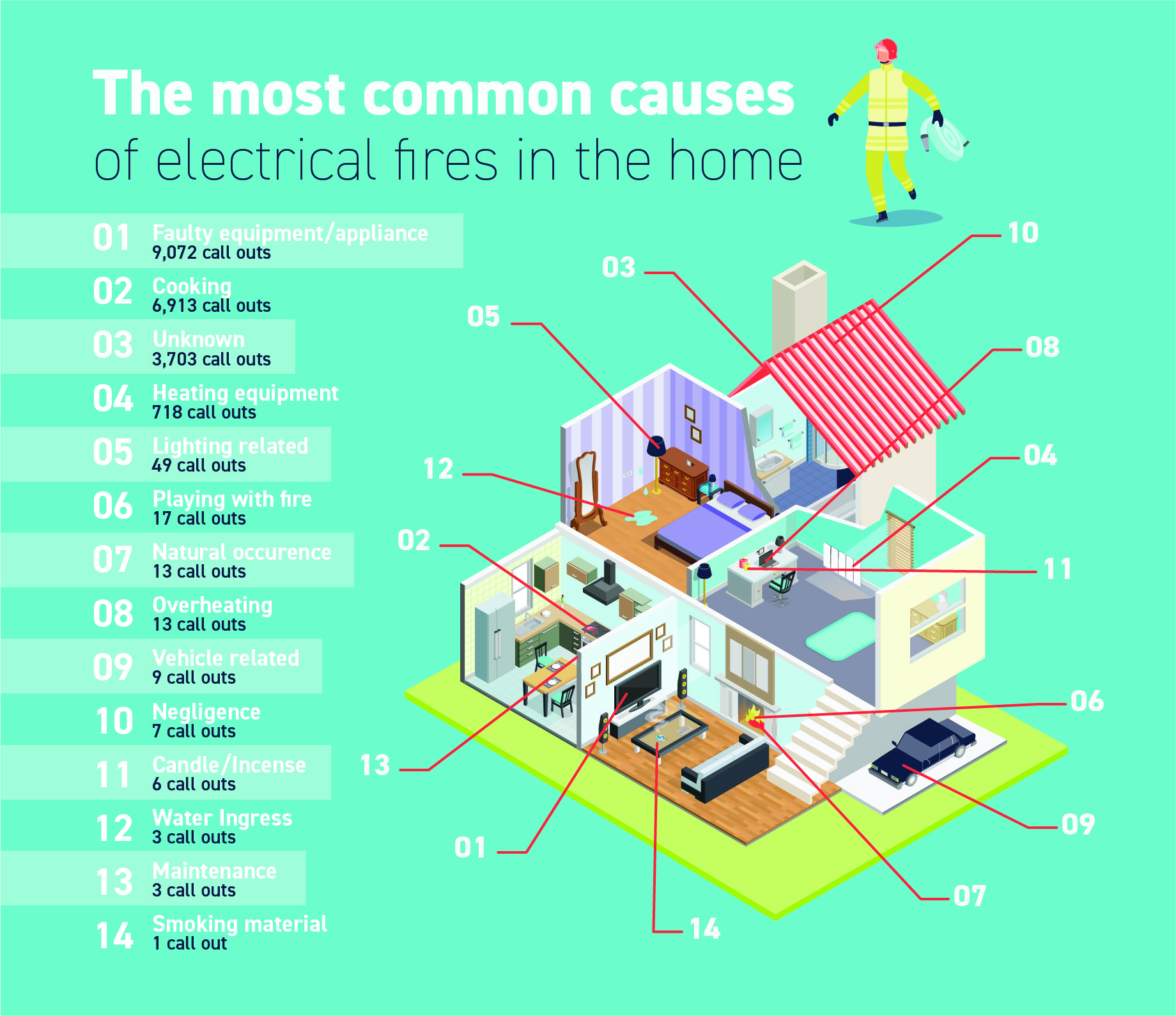Fires might be more frequent than you think. In fact, at the end of June 2023, a considerable 32,537 fire-related electrical incidents were reported. As electrical safety specialists in workspaces, this got us thinking – where’s a hotbed for these incidents? What are the most common causes? And when are fires most likely to ignite? We sent FOI requests to Fire and Rescue departments throughout the UK to find out.
With the data we received, we then compiled lists to analyse topics such as fires in each location by month, fires resulting in injury by location, total fires in each area by category, and more. Let’s dig into the results, shall we?
Dicey December
Although businesses should be taking measures against fire risks throughout the year, December is the month that carries the biggest threat. The festive season is when our emergency services are called on the most, recording the highest number of callouts in 2020 (1112), 2021 (1042) and 2022 (1006). Perhaps it should come as no surprise, considering it’s the season when offices and living rooms are alight with festive décor.
Answering the Call in Workspaces vs Home
There were significantly more injuries reported from homes compared to workspaces. In fact, out of 20,527 callouts from home settings, 2.219 (10.8%) resulted in injuries. Though the figure for injuries from business-related emergencies is smaller (140), it’s still significant – particularly when you consider that 3% of these fires have resulted in injury. The latter suggests that some businesses’ fire safety measures might not be robust enough to protect staff.
If you’re unsure whether your fire precautions are up to scratch, we can help. Direct 365 can provide a Fire Risk Assessment, Fire Alarm Testing and Fire Extinguisher Testing to help reduce fire risk in the workplace.
Shropshire’s on Standby
London lives up to its smoky moniker. The bustling ‘Big Smoke’ had the most callouts from 2020–2023, with a whopping 8,796,628. Dropping off considerably, Greater Manchester (3,750) and Devon and Somerset (2,285) are second and third on our list.
Proportionally, however, Shropshire takes the top spot for the county with the most callouts. Home to rolling hills, quaint market towns and the iconic Buildwas Abbey, the charming area has the most electrical-related fires per 1,000 people, with 1.91. Elsewhere, Leicestershire arrives in second with 1.33, closely followed by Greater Manchester (1.31).
But which places get the least callouts? Our data says it’s Warwickshire. The West Midlands region keeps their fire services at bay compared to other regions, with just 0.18 callouts per 1000 people. Cornwall and Lancashire follow suit, recording only 0.25 and 0.30 callouts, respectively.
Pulling the Plug on Faulty Equipment
You’re playing with fire if you have faulty electrical equipment. Our data shows it made up almost half (48%) of callouts across the UK. Out of the 15,583 recorded incidents, a sizable 2,727 were reported in businesses, highlighting the need to check office appliances and circuits regularly.
For many locations, faulty electrical equipment was the most common cause of electrical fires. Like in West Yorkshire (950 out of 951 cases), down south in Essex (526 out of 626), and in the North of Wales (81 out of 405).
Elsewhere, cooking accidents, like overheating oil and leaving flammable materials near stoves, accounted for 27% of callouts. Unlike faulty electrical equipment, cooking accidents don’t pose the same threat to businesses, making up just 306 out of the 8,643 cases. Heating equipment going haywire (455) was the most prevalent cause behind businesses calling our emergency services.
Accidents in the Line of Fire
You’re more likely to nurse an injury at home than you are in a place of work. From 4,634 callouts, a mere 3% (140) of electrical fires resulted in an injury, compared to 10.8% of domestic callouts. Arguably, this shows there are robust safety measures in workspaces that can better protect colleagues from injury – and businesses from costly compensation claims.
Northern Ireland (20.1%), Greater Manchester (16.5%) and Suffolk (15.4%) are the areas with the highest number of fire-related injuries. Again, faulty electrical equipment and cooking accidents are the main culprits, with these hazards causing 1,005 and 1,135 injuries, respectively.
They’re not the most dangerous when it comes to injuries, though. The percentage of people with injuries caused by faulty equipment or cooking is 6.4% and 13.1%, respectively. Compare this with injuries sustained from water ingress (18.2%) or maintenance (25%); you can see a noticeable difference. This is most likely because they can lead to structural damage, electrical hazards, and other severe issues if they’re not addressed.
Final Thoughts
So, what have we learned? For one, some regions are more prone to fires than others (Shropshire, we’re looking at you). We’ve also discovered that December is particularly susceptible to fire-related incidents, maintenance faults cause the most injuries, and dodgy electrical equipment is the most common reason for emergency callouts. Plus, we learnt that there’s a significant risk of fire emergencies in workspaces, as well as your home.
But how do you extinguish the risk of fires at your business? That’s where we can help. Direct 365 provides comprehensive fire risk assessments, fire alarm testing, and fire extinguisher testing to ensure your business stays safe. Head to our electrical safety services to find out more.
Back


